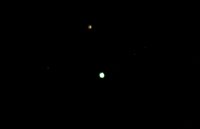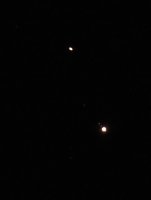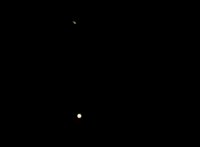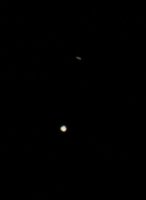Actually, that's not something you have to do manually. That's why I mentioned the software Autostakkert and Registax. They are free applications that ingest a series of frames or a video and analyse them for common features used in alignment. They also evaluate the sharpness of these features and allow you to use only the sharpest sections in your frame stack to compose a final image with both less athmospheric distortion and noise (you're doing stacking after all).It's going to take a lot of work to step through and magnify each shot to look for the best ones, though!
If you aren't using any form of tracking for the camera, the subjects will of course move between shots. And that can make the alignment process fail, at least in Autostakkert (I haven't really used Registax). What I did once to compensate was open my images as layers in PS and roughly align them manually using the difference layer blend mode. Really just quickly eyeballing it and then exporting the layers for Autostakkert (2 or 3, both work well mostly) for the rest.
It also begins to struggle if you use pictures taken across a long period of time. The reason for this is the rotation of the planets, which unlike the apparent motion across out sky, can't be compensated for in post. But with 20 FPS (or higher if you take a video) I think that should not be a major concern.
Upvote
0




